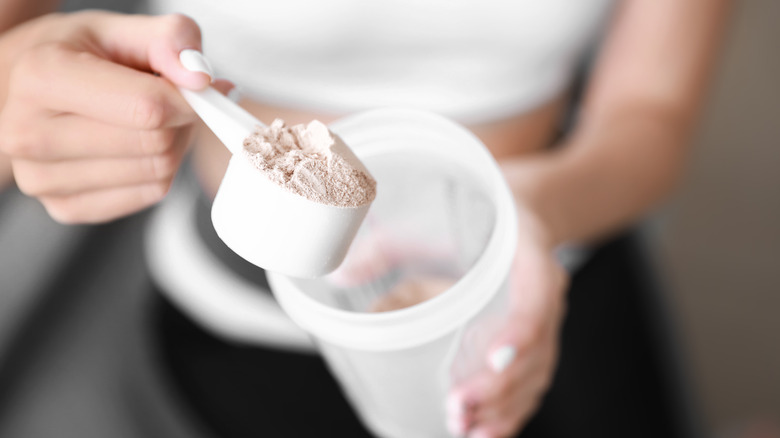How Does Whey Protein Affect Your Skin?
If you're looking to get in shape, you may have considered trying protein shakes. Protein is an incredibly important aspect of your nutrition as it's responsible for cell regeneration and repair (via WebMD). Having a diet high in protein can also help you to build muscle, increase your metabolism, improve bone health, lose weight, and can even help you nix cravings while helping you feel fuller longer (per Healthline).
According to WebMD, up to 35% of your daily caloric intake should be in the form of protein. While many foods are naturally high in protein, some people enjoy the convenience of protein shakes. Whey protein, in particular, is a popular protein supplement usually sold in powdered form in a variety of different flavors. As a milk product, whey may help to lower cholesterol and blood pressure as well as aid in muscle gain and weight loss (via Medical News Today).
While whey may be a convenient way to increase your protein intake, there may be a particularly unpleasant side effect for your skin should you choose to use it.
Whey protein may cause acne
Before you add whey protein to your morning smoothies, you may want to consider your skin. As with other dairy products, whey protein has been shown to cause acne, thanks to the fact that it can increase your testosterone levels, creating excess sebum in the skin which can result in breakouts (via Byrdie). Celebrity dermatologist Dr. Harold Lancer told Byrdie, "Just about anyone that consumes whey proteins can develop testosterone spikes that can lead to blemishes."
Acne can be detrimental to your self-esteem and confidence but fortunately, you don't necessarily have to sacrifice your clear skin in order to get your protein fix. There are many plant-based protein supplements you can buy that don't contain dairy products and therefore won't cause your skin to break out, according to Byrdie. One, in particular, is pea protein. Pea protein, made from peas, is an excellent source of iron, fiber, and protein that you can add to smoothies, shakes, yogurt, and oatmeal (per Healthline).


